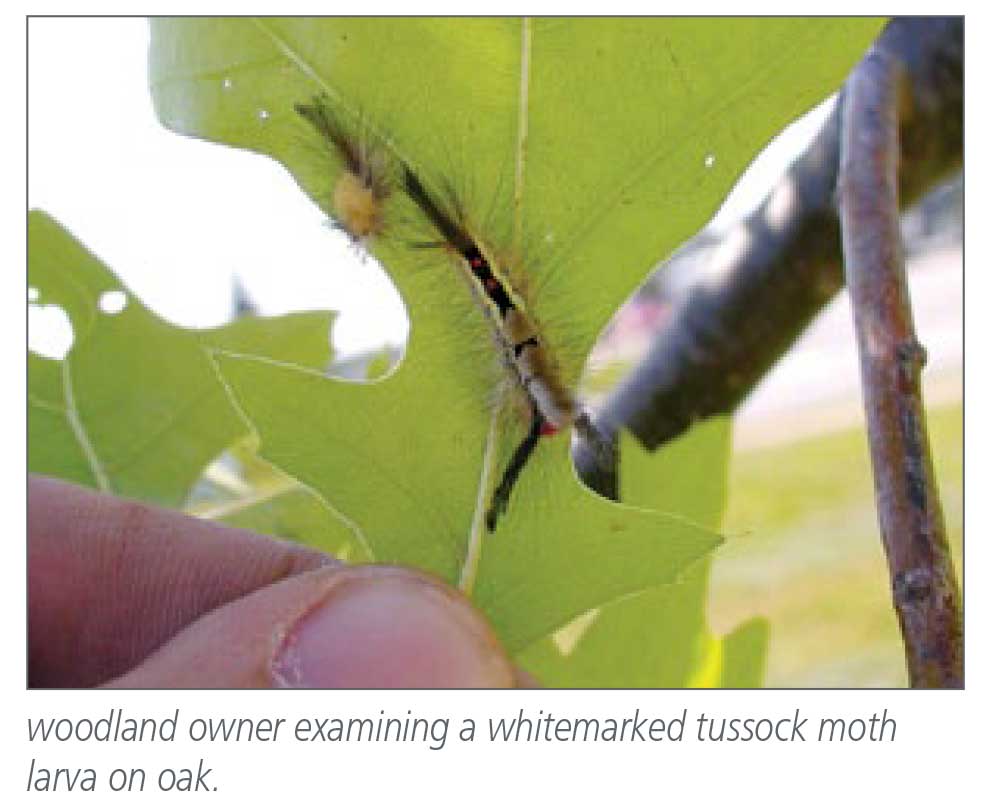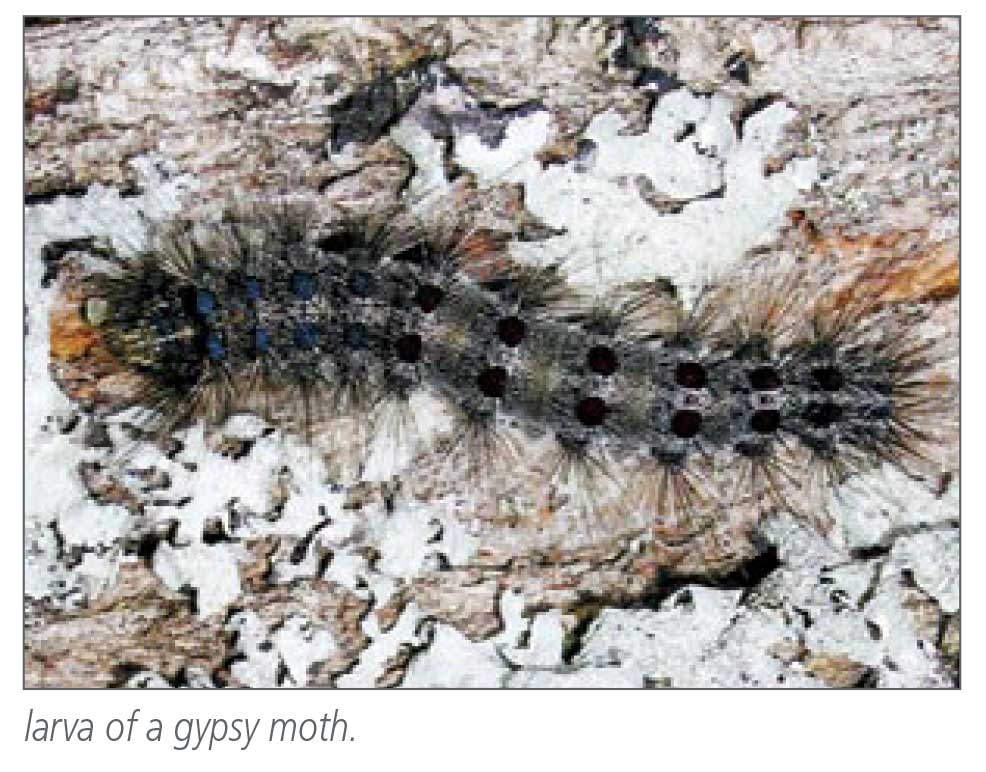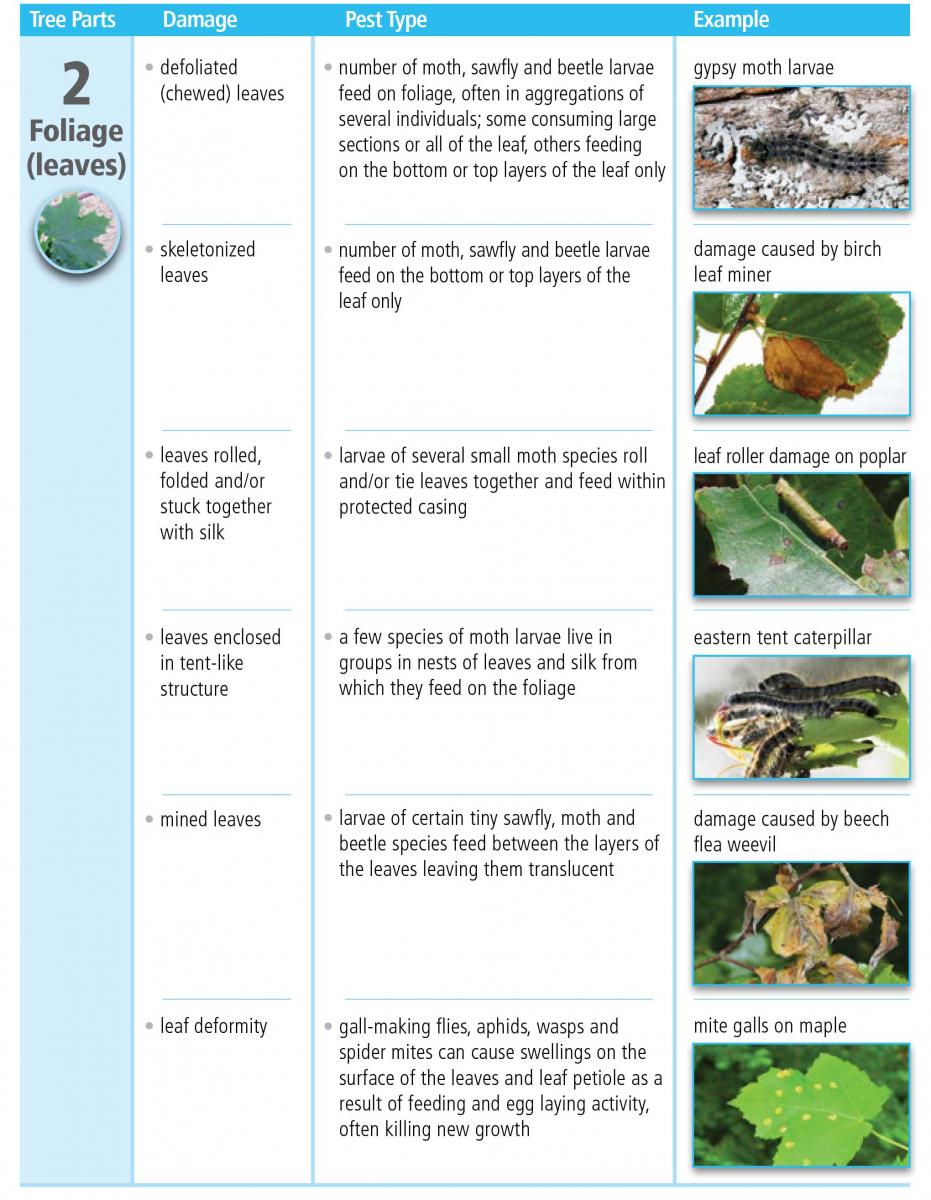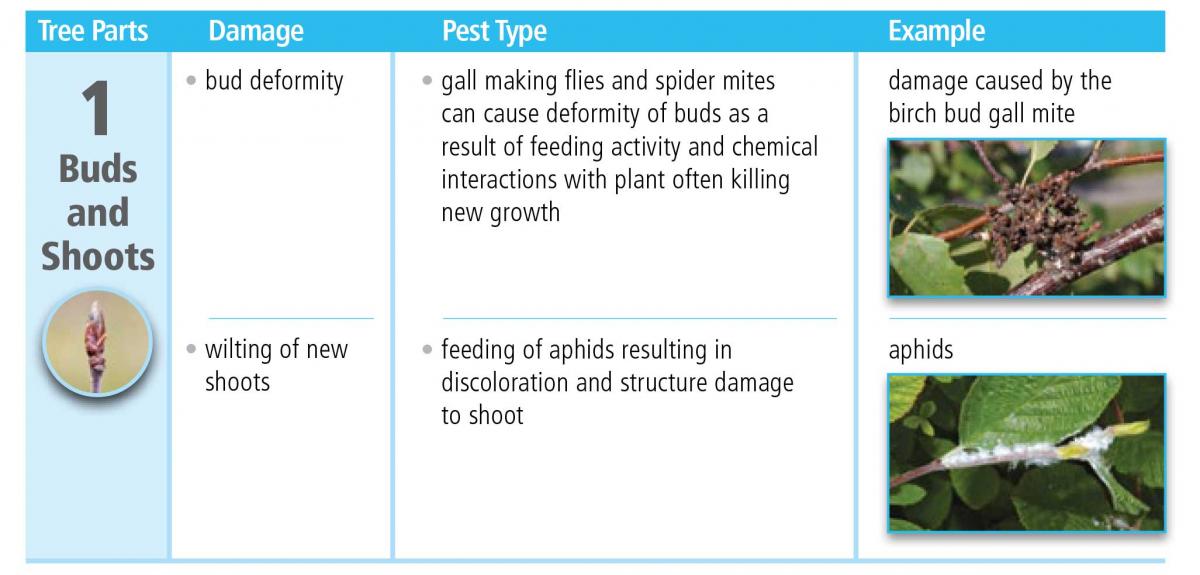Module 15: Pests of the Acadian Forest
Lesson 3 Hardwood Pests
Lesson Three guides you through a process of what to look for if insects are feeding on hardwood trees on your woodland. This will help you narrow down which insect may be feeding there. This is a similar process to the one used in Lesson Two for softwoods. A few insects will feed on both kinds of trees.
 Like Lesson Two, this lesson begins with what to look for in terms of insect damage. This may be what first catches your attention walking through a hardwood stand or on an individual tree. You may notice some changes from a distance and others close up. Next, the lesson examines in more detail what you may find on various parts of the hardwood tree.
Like Lesson Two, this lesson begins with what to look for in terms of insect damage. This may be what first catches your attention walking through a hardwood stand or on an individual tree. You may notice some changes from a distance and others close up. Next, the lesson examines in more detail what you may find on various parts of the hardwood tree.
What to look for
Widespread infestation of hardwood trees is less frequent and often less intense than for softwoods in Nova Scotia. For hardwoods, the extent and severity of the damage can be greatly influenced by weather and other factors such as drought or nutrient loss. Any added stress may intensify the damage caused by pests and may contribute to tree mortality.
Walking on your woodland, you may notice changes in your hardwood trees such as wilting leaves, evidence of chewing, yellowing foliage and thinner crowns. You may see dead leaves on the branches or twigs. You may also see tents or webbing created by insects in the branches.
 Up close you may notice further signs of damage. Leaves can be stuck together, have spots or be curled up. Insects can chew holes in leaves giving them a shot gun look and later eat the whole leaf. Galls as large as ping pong balls are made by insects for shelter on the leaves or twigs.
Up close you may notice further signs of damage. Leaves can be stuck together, have spots or be curled up. Insects can chew holes in leaves giving them a shot gun look and later eat the whole leaf. Galls as large as ping pong balls are made by insects for shelter on the leaves or twigs.
Sometimes the insect may still be present, feeding on the tree. Insects usually begin feeding in the spring. Make a note of when you first noticed the damage. Come back a month later and see how much the damage has increased.
Insect types on five hardwood tree parts
In this section, the tree is studied even more closely. The tree is divided into five parts in the chart below for this purpose. Reading down they are: Buds and Shoots, Foliage (leaves), Twig and Branch, Stem or Log, and Root. Reading across are the damage you may see, the pest type found feeding there and a few examples. A few pests will feed on more than one part of the tree. As with the softwoods, these insects are also busy boring, chewing, and sucking. This results in certain kinds of visible damage that point in turn to specific insects.


Some control options
As with softwoods in Lesson Two, these insect types impact the trees in a woodland to varying degrees. For many types, the degree of damage may be determined simply by the weather during a particular year. The added stress of a summer drought, wet spring or harsh winter can intensify the impact of a usually less harmful pest outbreak.
Some pests may be considered more of a visual problem such as galled and deformed leaves or the odd stem killed by a web spinning sawfly which can look unattractive. In forested settings, there may be no need for control options for such pests.
For defoliators, control is often necessary when populations get high enough. Knowing what products to use in a specific situation is key to protecting the resource. Chemical or biological insecticides may not be effective if the pest bores into trees, lives in a ball of spittle or mines into needles. Certain products may work very well on moth larvae, such the biological insecticide Btk, but are completely useless on wasp or beetle larvae.
New products include viruses developed specifically to target particular species, chemical mating disruptors and various lures and attractants.
Knowing what control products are available and when, how and if to apply them are key in protecting your woodland. Remember to read and follow the instructions on the label when using any control agent. Proper application and use of recommended personal protective equipment are essential for the safe use and effectiveness of any pesticide.
Review
Taking a closer look at the damage to trees on your woodland is the first step to identifying the pest. The tree part and the type of damage are both initial clues. If you decide that a control product is needed, take time to review and select the appropriate option.


